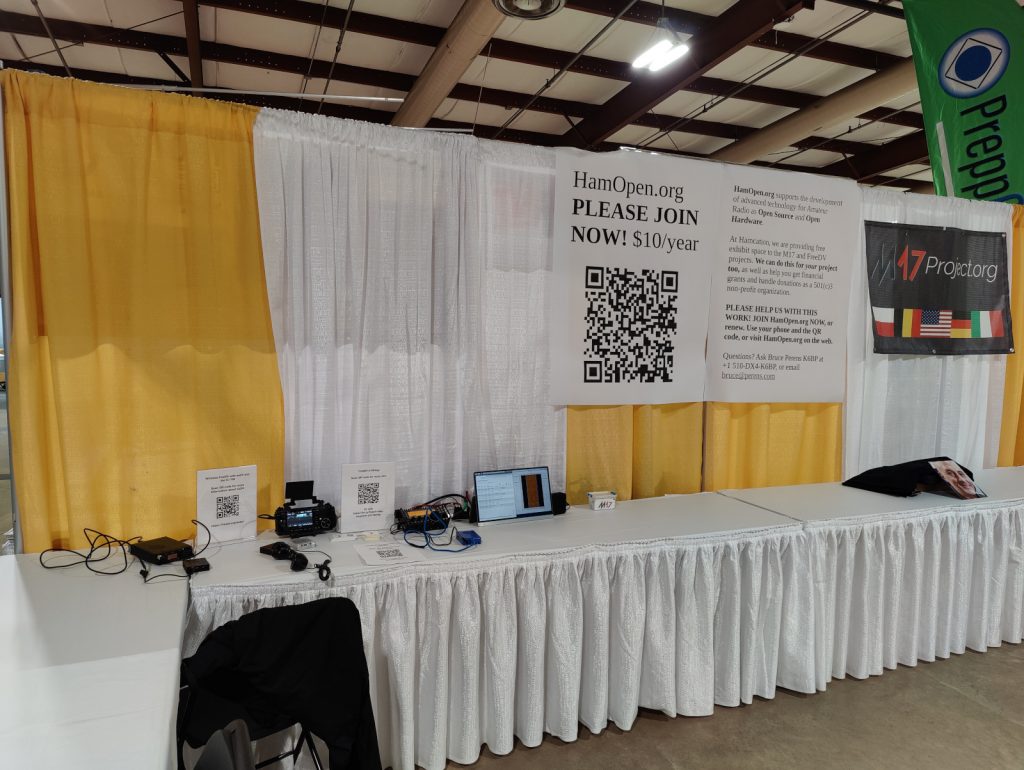This month, freedv-gui got the following bug fixes and feature enhancements:
- Fixed minor memory leak involving FreeDV Reporter window.
- Fixed issue causing delayed updates when modifying FreeDV Reporter filters.
- Added support for unlimited length reporting messages in FreeDV Reporter.
- Added additional error reporting in the event of PortAudio failures.
ezDV also got the following changes:
- FreeDV Reporter:
- Fixed issue preventing auto-reconnection to FreeDV Reporter when connection is lost.
- Fixed issue causing crash if FreeDV Reporter connection exists and Wi-Fi goes down.
- Added reporting message functionality to FreeDV Reporter implementation.
- Lowered priority of FreeDV Reporter task.
- FlexRadio support:
- Fixed bug when user audio mixes with radio audio during TX.
- Optimized sample rate conversion to use fixed-point math and ESP32S3 SIMD instructions to reduce CPU usage.
- Updated audio packet sending logic to reduce audio dropouts during TX and RX.
- Updated audio scaling logic so that 100% in SmartSDR equals 100 watts of power
- output.
- Upgraded project to ESP-IDF 5.2.1.
- Fixed typos preventing failure popup from disappearing in web UI.
- Made changes to avoid unnecessary commits to NVS flash when settings haven’t changed.
- Created user manual and added infrastructure to automatically build it and firmware when releasing new versions.
- Changed default FreeDV mode to 700D on initial startup.
- Updated HTTP serving logic to reduce likelihood of failed transfers.
- Added logic to preload voice keyer data during transmit to reduce latency.
- Fixed bug causing sync LED to remain lit when switching to analog mode.
- Refactored DVTask and DVTimer to enable more easily readable stack traces in case of crashes.
- Added 250ms hard timeout when stopping TX to prevent the radio from being stuck in transmit.
More information can be found in the commit history below:
(Note that all commit logs above were generated with the following command line:)
git log --author="member@email" --after "Month 1, 2024" --before "Month 31, 2024" --all > commit.log
